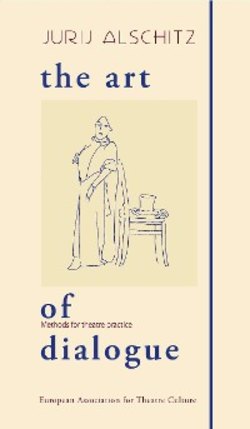The Art of Dialogue

Описание книги
The Art of Dialogue The actor’s profession is, first and foremost, an open system of communication in an endless dialogue with his character, with his partner, with the director, with the spectators, with the playwright, with the role – but at the end of this list we should say – the actor also has an infi nite dialogue with himself. When the actor himself is open, then he knows how to open others, and then they open up to him. The opening of another system, and of another view, allows the actor to learn something new, to go beyond the boundaries of his familiar knowledge of the world and himself.
In Theatre, dialogue is the art of creating with others. And for this, you need not only the talent of a Person but also the skills and mastership of an Artist. In this book, you will be introduced to my research about dialogue on stage, sketches of working methods and, of course, practical exercises. It’s important to me that you fi nd something useful here, something questionable and even something which you don’t need at all. I hope you will fall in love with dialogue on stage, and open up its artistic beauty for yourself.
Отрывок из книги
This book is dedicated to my students and friends who have helped me to create and run the European Association for Theatre Culture which will turn fifteen years old this year.
My heartfeld thanks.
.....
We find images of creatures with combined origins not only in ancient literature but also in modern art: lion-men, cupboard-people, bird-women, elephants walking on mosquito legs. All of these – my favourite examples of miracle-beings by René Magritte, Max Ernst, Salvador Dali – are my models and examples of dialogue. Look at their striking work: a multitude of many irreal combined dialogue-creatures! This is how, taking their lead, I combine elements of dialogue so that what appears is an exit into irreality. A moment, an explosion and you are no longer here and now, but in another dimension. This is how my dialogue looks to me. Since time immemorial, Art, with its diverse methods, demonstrates the ability of human fantasy to create unbelievable creations – not subservient to the human mind – out of parts which cannot possibly exist together by the logic of reality. Furthermore, we can note not only people’s ability but also their passionate, and at times inexplicable, wish to unite and create what does not exist and what cannot exist. I’m certain that much more of this kind of passionate striving is needed from the actors, when holding a dialogue – to unite, to re-imagine, in order to make the miraculous.
Of course, we are people. It’s difficult for us, on the basis of our micro-knowledge of psychology, to imagine the life of centaurs, satyrs, mermaids, griffins, Harpies, minotaurs, and many other beautiful creatures. It’s really difficult for us to imagine what intensive dialogue goes on inside them, between one part of the being and the other. But it goes on, and very intensively. Look carefully: inside the Centaur, there is the constant stamping and jumping of dialogue between man and animal, knowledge and intuition, culture and wildness. The Centaur can manage all types of gait, which means that all types of movement must exist in Dialogue. It has its pirouettes, cantering, gallop and so on. Can you see before your eyes, how, in such a dialogue the human is leading, but now the bird’s nature takes over, and suddenly the snake appears but now the lion is roaring? This dual, and constantly shifting, nature of such mythological beings is universal. They have a special mental structure, a special dialogical way of thinking. The creative, shared way of thinking between two – this is a special method of existence. That is what’s important! This is the very quality which should be manifest in the actor in the process of a dialogue. To arrive there, we’ll need to dedicate a whole series of exercises to this shared way of thinking and joint creativity.
.....
